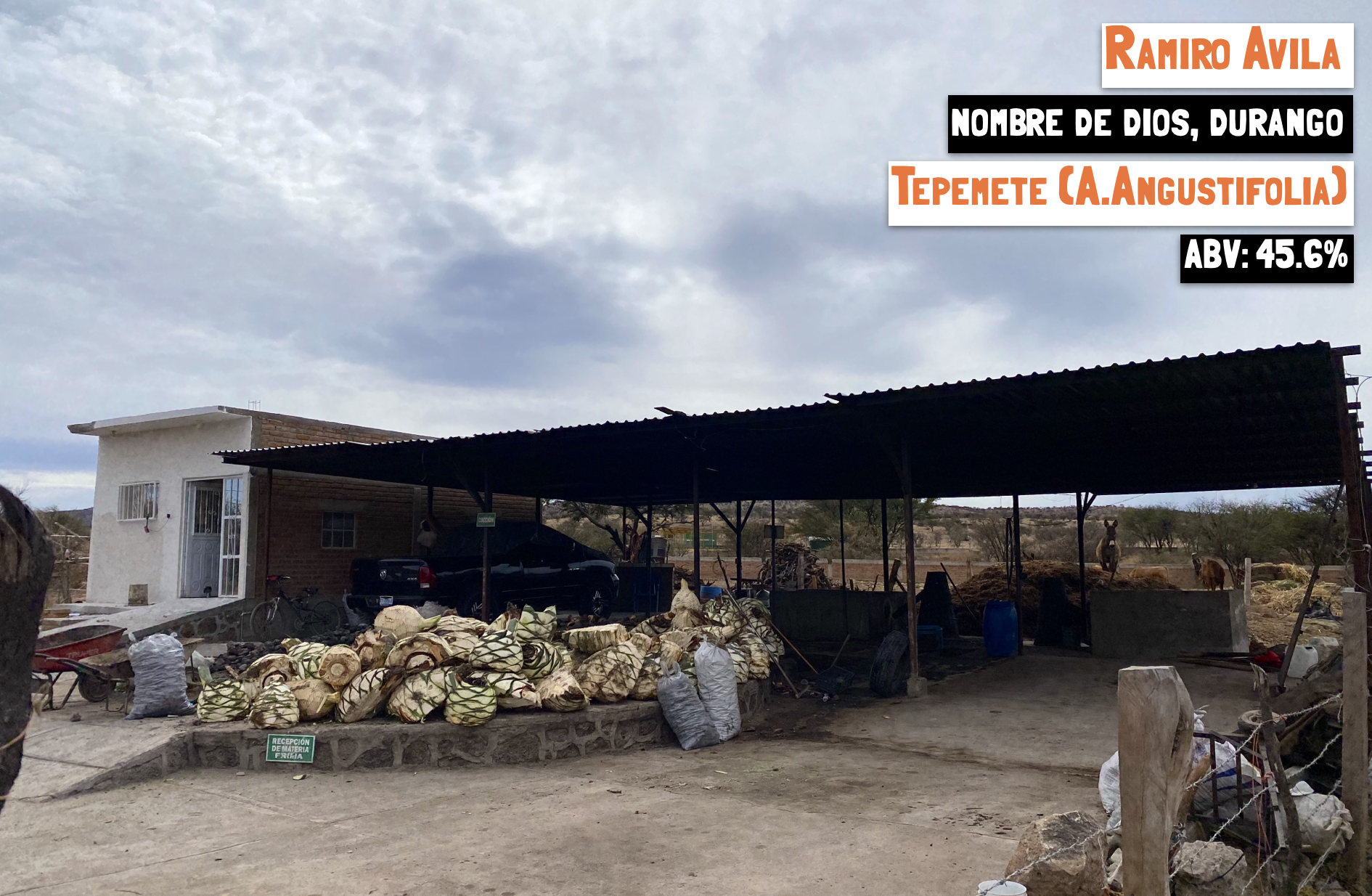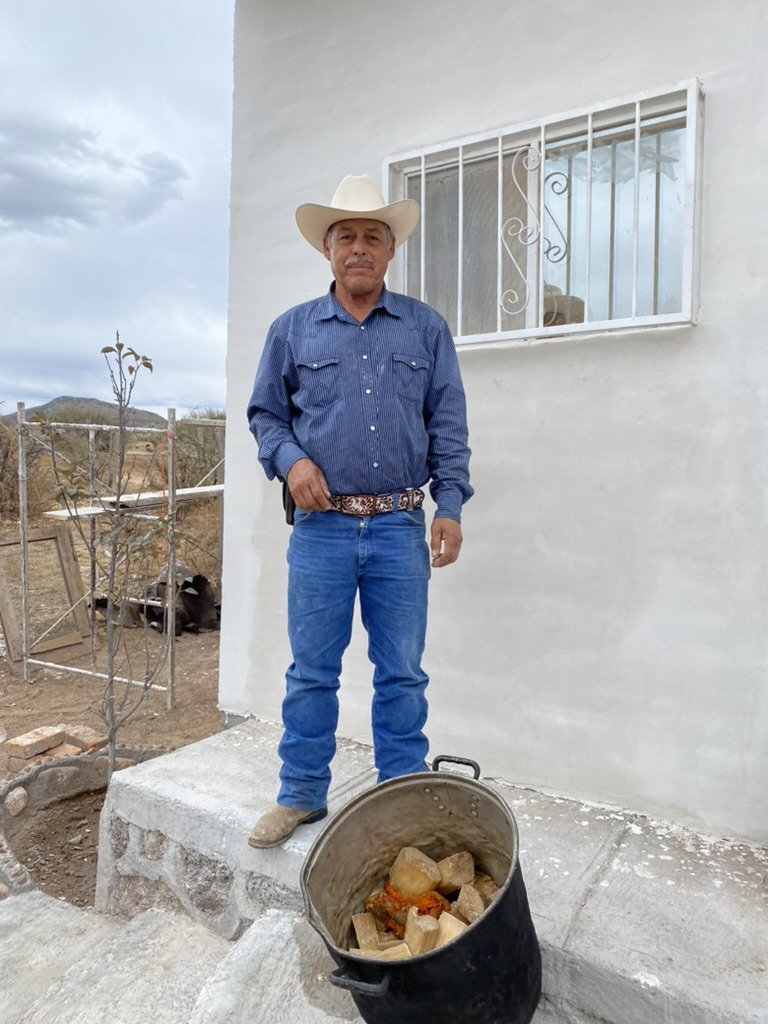Tepemete - Nombre de Dios
Batch: D-RA-02
Release date: December 2022

At a glance:
- Maguey: Tepemete (A. Angustifolia)
- Producer: Ramiro Avila
- Region: Nombre de Dios, Durango
- Cooking: 3 days over hot rocks in earthen horno
- Milling: By hand with axe
- Fermentation: 3-4 days in 'coffin' style wood lined in-earth pits
- Distillation: Double pass in Durango style hybrid (see below)
- Composition: Heads, hearts and tails
- Batch size: 50 litres
- Date of production: January 2022
- ABV: 45.6%
About 45 minutes drive south east of the city of Durango sits the dusty town of Nombre de Dios. Added to Mexico’s growing list of Pueblo Mágico’s in 2018, it’s the hub of agave spirit production in this state of northern Mexico.
On the outskirts of the town Ramiro Avila keeps a small vinata (distillery) at which he produced this micro-batch of Tepemete in January 2022. We’re very pleased to present it as our first bottling from the region.
Introducing maguey Tepemete: While it’s part of the Angustifolia family or agave, which makes it a cousin of the ubiquitous Espadín, it’s nowhere near as common. In fact Tepemete is only found in the state of Durango, and to our knowledge is as yet uncultivated.
The work-horse maguey of this region, which in term if its cultivation is most comparable to the Espadín of the south, is the Cenizo (A.Durangensis).
The maturation time, size of piña, sugar content and yield, of the Tepemete is comparable to the Espadín but with statistics varying wildly due to the varied wild conditions it grows in.
-

Tepemete piñas, along with a few Sotol, wait for the roast at Ramiro’s vinata
-

Agave & Sotol growing wild in the hills around Nombre de Dios
-

Harvesting from the wild
After a familiar 4 days roast in earthen horno, the agave is chopped and mashed entirely by axe. No horse drawn tahona, no petrol driven chipper, just a heavy axe and a lot of hard work.
Fermentation up here in Durango generally takes place in these wood panelled in-earth wells that are kind of morbidly reminiscent of graves. Water is added to the axe chopped mash and it’s left to naturally ferment for 3-4 days.
Distillation in Durango is in this hybrid alembic-filipino style. It’s got the wooden filipino style top condensing pot that you’ll see in Michoacán to the south, but no condensing lid with water running into it, and no in-still capture system.
Instead the vapour is forced out of the wooden top pot into an attached serpentine coil in a cooling bath… the likes of which you would see with regular alembic distillation. The boiling pot is copper, and everything is double passed.
The defining feature of ‘filipino’ style distillation is the in-still capture. So lets call this ‘Durango style alembic’
Multicolumn
Multicolumn

Gracias Ramiro
House Tasting Notes:
Cured meats and spices on the nose. On the palate ripe fruits mix with leather tones and a candied sweets. Certainly some smoke in there with the cinnamon and clove from the spice rack coming back for the finish.

This batch is now out of stock, take a look at the full range available here...

Become a member and learn more about mezcal
Where your passion for mezcal transforms into a journey of discovery and delight. As a member, you'll gain exclusive access to curated tastings, educational events, and insider knowledge from industry experts.
Whether you're a seasoned enthusiast or a curious newcomer, our community provides a welcoming space to explore, share, and savour mezcal like never before. Join us and immerse yourself in the art and culture of mezcal, one sip at a time.









